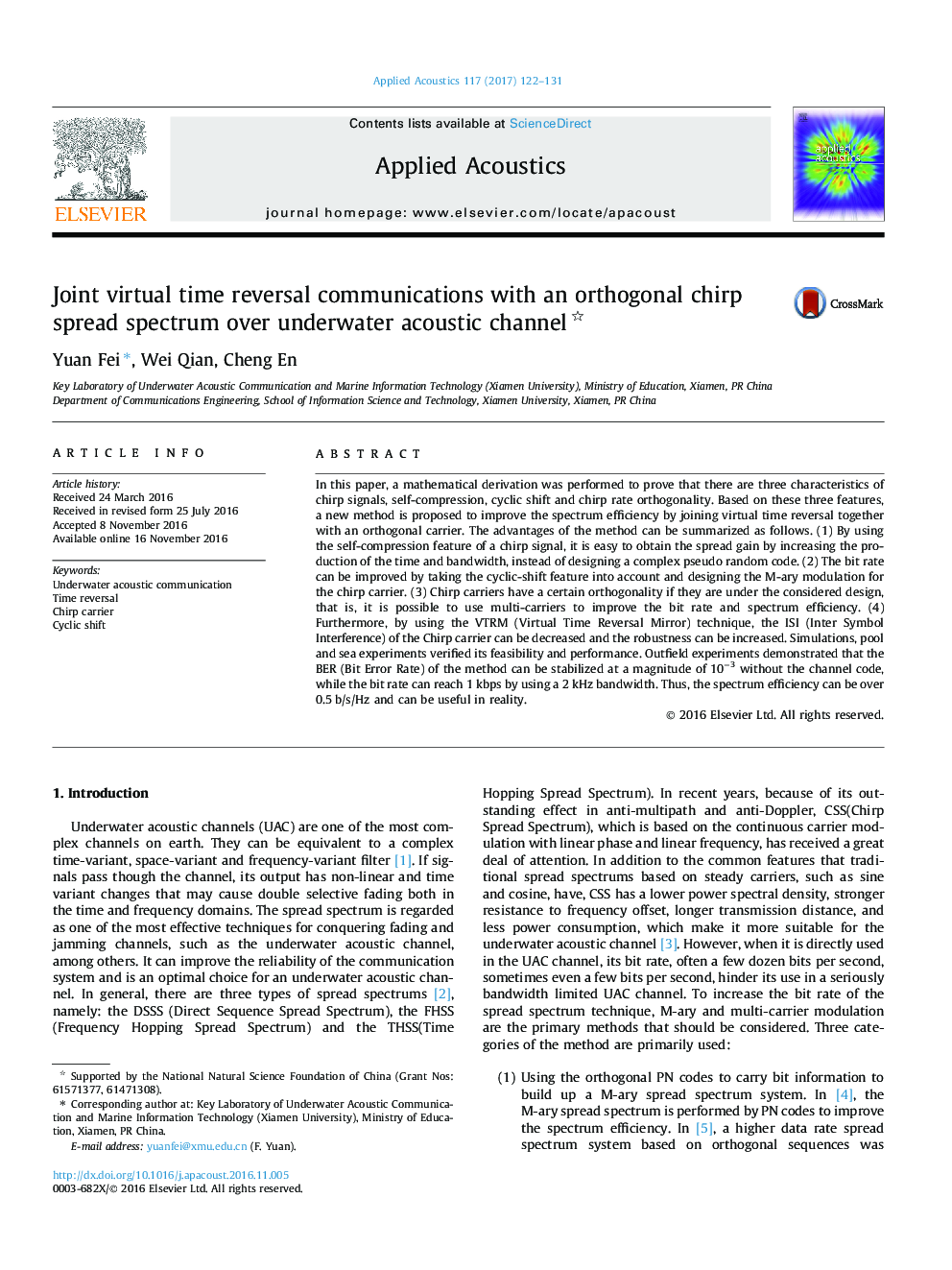| Article ID | Journal | Published Year | Pages | File Type |
|---|---|---|---|---|
| 5011012 | Applied Acoustics | 2017 | 10 Pages |
Abstract
In this paper, a mathematical derivation was performed to prove that there are three characteristics of chirp signals, self-compression, cyclic shift and chirp rate orthogonality. Based on these three features, a new method is proposed to improve the spectrum efficiency by joining virtual time reversal together with an orthogonal carrier. The advantages of the method can be summarized as follows. (1) By using the self-compression feature of a chirp signal, it is easy to obtain the spread gain by increasing the production of the time and bandwidth, instead of designing a complex pseudo random code. (2) The bit rate can be improved by taking the cyclic-shift feature into account and designing the M-ary modulation for the chirp carrier. (3) Chirp carriers have a certain orthogonality if they are under the considered design, that is, it is possible to use multi-carriers to improve the bit rate and spectrum efficiency. (4) Furthermore, by using the VTRM (Virtual Time Reversal Mirror) technique, the ISI (Inter Symbol Interference) of the Chirp carrier can be decreased and the robustness can be increased. Simulations, pool and sea experiments verified its feasibility and performance. Outfield experiments demonstrated that the BER (Bit Error Rate) of the method can be stabilized at a magnitude of 10â3 without the channel code, while the bit rate can reach 1Â kbps by using a 2Â kHz bandwidth. Thus, the spectrum efficiency can be over 0.5Â b/s/Hz and can be useful in reality.
Related Topics
Physical Sciences and Engineering
Engineering
Mechanical Engineering
Authors
Yuan Fei, Wei Qian, Cheng En,
